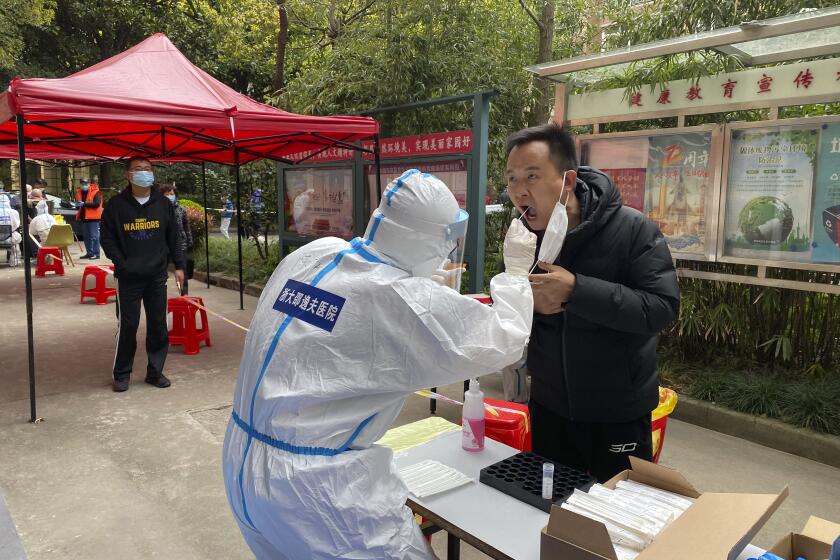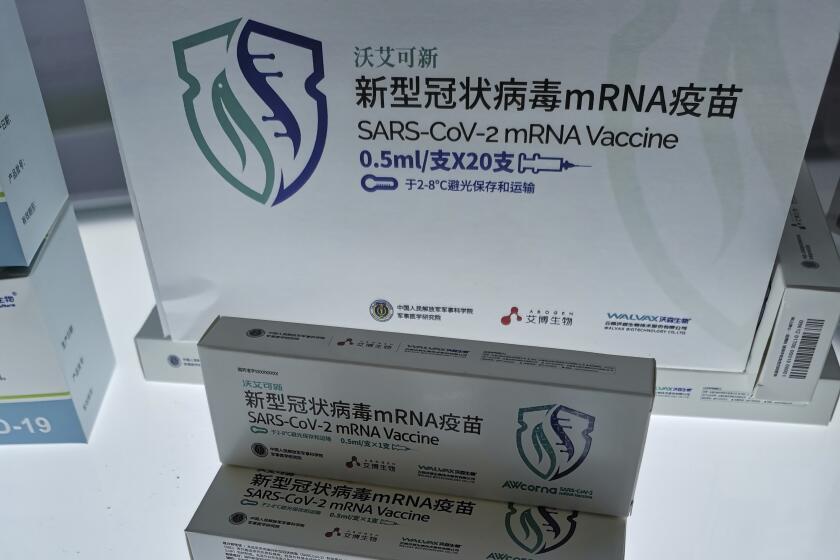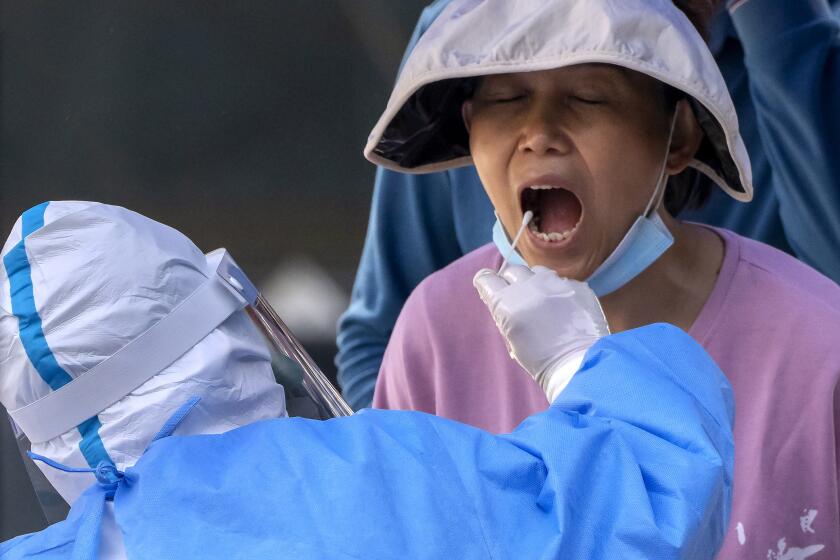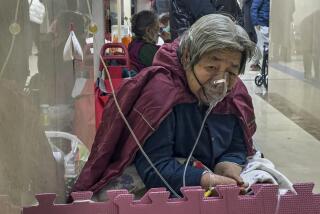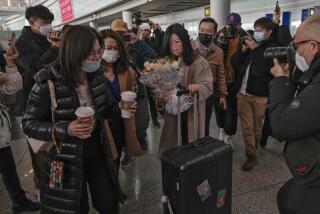As leaders meet, Chinese hope for end to ‘zero-COVID’ limits
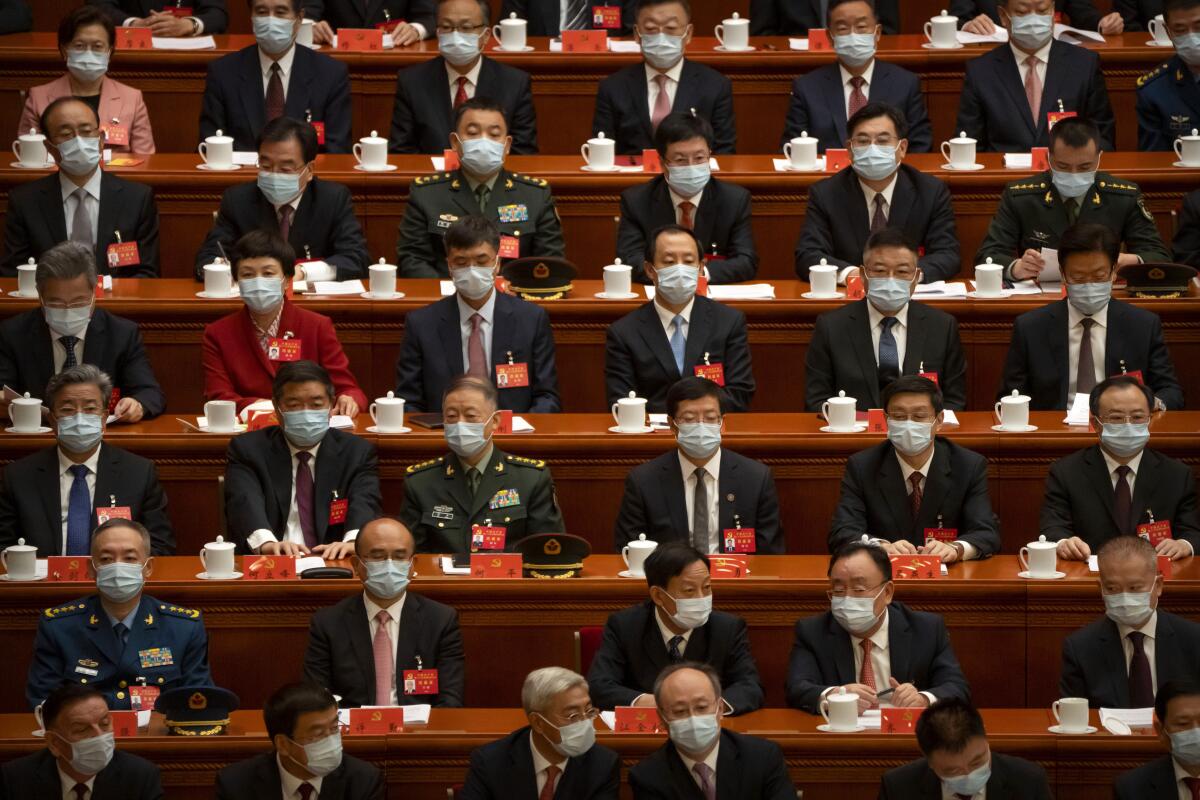
BEIJING — As China’s ruling Communist Party holds a congress this week, many Beijing residents are focused on an issue not on the formal agenda: Will the end of the meeting bring an easing of China’s often harsh “zero-COVID” policies that are disrupting lives and the economy?
It appears to be wishful thinking. As the world moves to a post-pandemic lifestyle, many across China have resigned themselves to lining up several times a week for COVID-19 tests, restrictions on their travels to other regions, and the ever-present possibility of a community lockdown.
“There is nothing we can do,” Zhang Yiming, 51, said this week at a park in Beijing. “If we look at the situation abroad, like the United States where over 1 million people have died, right? In China, although it is true that some aspects of our life are not convenient, such as travel and economy, it seems that there is no good solution.”
People are looking to the party congress, which ends Saturday, for two reasons. The meeting, which is held every five years and sets the national agenda for the next five, can send signals of possible changes in policy direction.
Secondly, authorities always tighten controls — COVID-19 and otherwise — before and during a major event to try to eliminate disruptions or distractions, so they could relax controls when the event ends.
Any hopes for an easing, though, appear to have been dashed before the congress. The Communist Party’s newspaper, the People’s Daily, published a series of opinion pieces on the effectiveness of China’s “zero-COVID” approach, and health officials said last week that China must stick with it.
China’s leader, Xi Jinping, praised the policy at the opening ceremony of the congress. He said it had prioritized and protected people’s health and safety and made a “tremendous achievement in striking the balance between epidemic response and economic and social development.”
After an initial outbreak in early 2020 that killed more than 4,000 people and overwhelmed hospitals and morgues, China was largely successful in taming the virus while other countries were devastated — a contrast trumpeted in Communist Party propaganda.
Then came Omicron in late 2021. China had to employ ever more widespread restrictions to control the faster-spreading variant, locking down cities and starting regular testing of practically the entire population of 1.4 billion people.
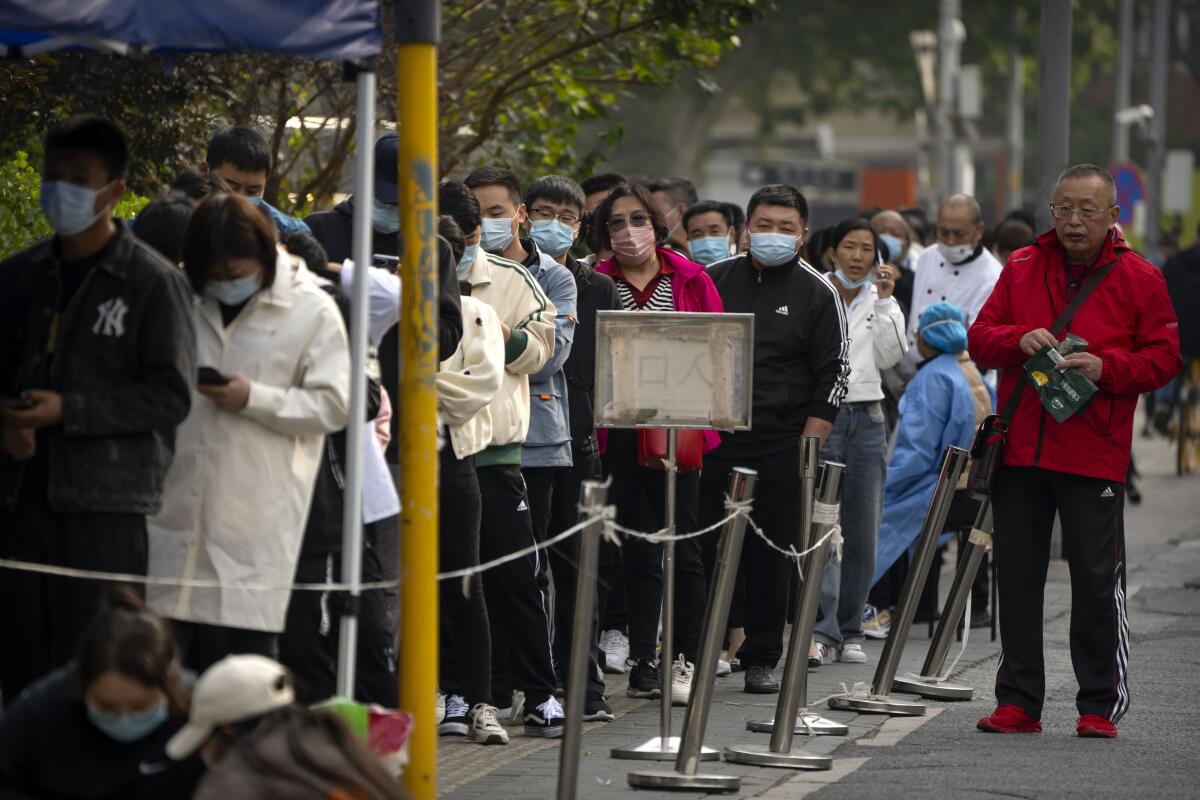
The measures have bred discontent, fed by instances of harsh enforcement that in some cases had tragic consequences.
During a two-month lockdown of Shanghai last spring, videos shared on social media showed officials breaking down apartment doors to drag residents to quarantine facilities. Children were separated from their parents, because one or the other was infected.
Instances of hospitals denying treatment because of pandemic rules sparked outrage, including a woman in labor who miscarried after she wasn’t allowed into a hospital during a lockdown of the city of Xian because she couldn’t show a negative test result.
China’s economic juggernaut hits a roadblock: Xi Jinping’s inflexibility on the draconian ‘zero COVID’ lockdown policy.
Although public protests are relatively rare in China, some people took to the streets in Shanghai and the northeastern city of Dandong to protest harsh and prolonged lockdowns.
Last week, three days before the congress opened, banners were flung over an elevated roadway calling for Xi’s overthrow and an end to the “zero-COVID” policy. The incident spilled over into at least one other city, where photos shared on Twitter showed similar statements posted on a bus stop in Xian.
Andy Chen, senior analyst at Trivium China, a policy consultancy in Beijing, said restrictions beyond the party congress should come as no surprise.
“All the conditions that have forced the government to put zero-COVID in place haven’t really changed,” he said, singling out the lack of an effective vaccine and the absence of sound home quarantine rules.
Though vaccines are widely available, China’s homegrown versions don’t work as well as the Pfizer-BioNTech, Moderna and other shots developed elsewhere.
China also has resisted vaccine mandates, keeping down vaccination rates. As of mid-October, 90% had received two shots, but only 57% had a booster shot.
China is trying to tackle its biggest coronavirus outbreak without a tool it could have adopted months ago: Western-developed mRNA COVID-19 vaccines.
Beijing authorities have stuck with the hard-line coronavirus policies during the congress.
Highway checkpoints into the city are heavily policed, with all entrants required to show a “green” code on a phone app to prove they haven’t traveled to medium- or high-risk areas.
Some express commuter bus lines between Beijing and neighboring Tianjin city and Hebei province have been suspended since Oct. 12.
Anyone who has been in a city, district or neighborhood where even one case of coronavirus has been found within seven days is banned from entering the Chinese capital.
Within the city, the daily lives of residents are dictated by their health codes. They must use an app to scan the QR code of any facility they enter to show their status and log their whereabouts.
People are not allowed into office buildings, shopping malls, restaurants and other public places without a green code and a negative coronavirus test result within 72 hours, and sometimes less. The policy means most of Beijing’s 21 million-plus residents take a coronavirus test at least two to three times a week.
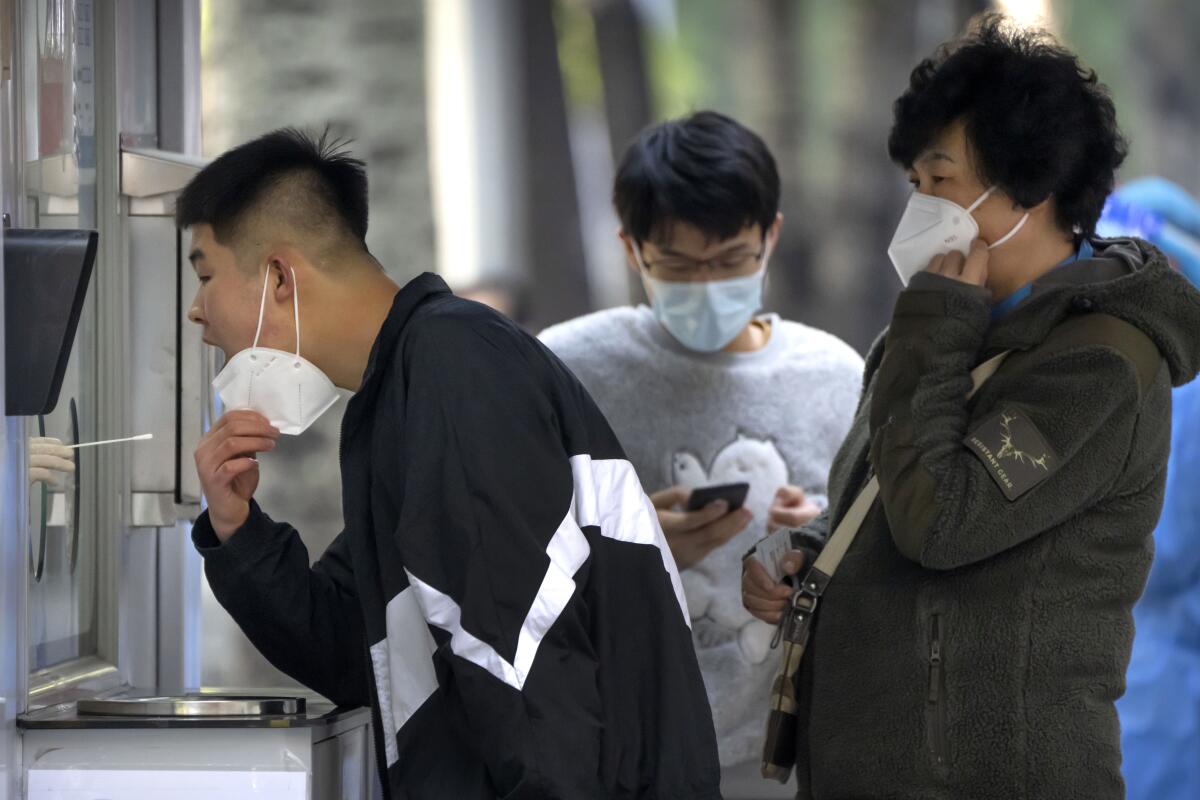
And there is always the risk of a sudden lockdown. Officials in hazmat suits guarded entries to gated communities this week in Fengtai district, where five neighborhoods have been categorized as high-risk. Residents were not allowed to leave their compounds, and some shops were forced to close.
While the party congress has not provided the watershed moment that some have been hoping for, it may turn out to be the point at which the government begins to lay the groundwork for a long process of loosening restrictions, said Yanzhong Huang, director of the Center for Global Health Studies at Seton Hall University and an expert on public health in China.
It’s unclear how long China’s leaders can maintain their zero-COVID strategy without sacrificing the economic growth that is a bedrock of their rule.
Some factors suggest the government will be in no rush to open up, including a broad acceptance of the policy among those who are inconvenienced but have not experienced prolonged or repeated lockdowns.
“The vast, vast majority of the population goes on with their lives, unaffected, and that’s a much better policy from the government perspective to implement than, for example, forcing a vaccine mandate through the population,” Chen said.
But Huang noted growing signs of social instability, especially among the middle class and urban residents.
“I think the question is whether it has reached a tipping point that people really find this is not acceptable anymore,” he said. “We cannot tolerate that anymore. It remains to be seen even in the large cities, you know, how people are willing to tolerate draconian measures.”
Ji reported from Bangkok. Associated Press video producers Olivia Zhang and Wayne Zhang contributed to this report.
More to Read
Sign up for Essential California
The most important California stories and recommendations in your inbox every morning.
You may occasionally receive promotional content from the Los Angeles Times.
